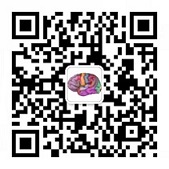Childhood Absence Epilepsy
Etiologies: consider genetic correlation (include glucose transporter disorder involve SLC2A1 mutation (it should be considered when onset of absence seizures <4 years or the treatment is not smooth, Note: This gene mutation is included as one of the exclusion criteria in the 2022 ILAE guidelines), other may involve complex inheritance, GABRG2, GABRB3, CACNA1A, NIPA2 may be susceptible genes. In addition, it is also related to some CNV level changes (such as 15q13.3 microdeletion syndrome) [1-5].
Age of onset: onset of seizures generally from age 2 to 12 years (peak 5 to 7 years).
Seizure characteristics: Frequent and typical absence seizures generally last for 4-20 seconds, and a few can be longer, but generally no more than 45 seconds. Absence seizures often frequently (dozens of times a day), the appearence and stop often suddenly, awareness and responsiveness are usually severely impaired. It can be induced within 2-3 minutes through standardized hyperventilation. There are generally no other types of seizures (except febrile seizures before absence seizures (about 15% to 20% people have a previous history of febrile seizures), and occasional generalized tonic-clonic seizures (GTCS) may seen in adoesence [6-8].
EEG: Background: normal. Interictal: a small amount of sporadic or generalized spike and wave of about 3Hz can be seen in the awake period. The rhythm of spike and wave of about 3Hz often increases in the sleepy period and some may have frequent occipital intermittent rhythmic delta activity (OIRDA) (some considered it is a good prognostic factor in typical absences) and focal spikes (most obvious in frontal area, which can also be located in central temporal area or parietal occipital area, and the side often not be fixed). Ictal: typical absence seizures can be characterized by bilateral generalized, synchronous and symmetrical rhythm burst of spike and wave of about 3Hz (the onset can be a little faster and a little slower before the end) [6-7].
Brain MRI: Most of them are normal.
Developmental progress: Basically normal.
Treatment:
National Institute for health and Clinical Excellence (NICE) epilepsy guidelines 2022:
First-line treatment: ethosuximide.
Second-line treatment: valproate sodium (monotherapy or add-on treatment for absence seizures in: boys of all ages, girls aged under 10 years and who are unlikely to need treatment when they are old enough to have children, women who are unable to have children).
Third-line treatment: lamotrigin, levetiracetam (monotherapy or add-on).
Be aware that the following drugs may exacerbate seizures: carbamazepine, gabapentin, oxcarbazepine, phenobarbital, phenytoin, pregabalin, tiagabine, vigabatrin.
Chinese clinical diagnosis and treatment guidelines epilepsy volume 2015:
First line drugs: valproate, ethosuximide, lamotrigin.
Drugs that can be added: valproate, ethosuximide, lamotrigin.
Other drugs that can be considered: clonazepam, zonisamide, levetiracetam, topiramate, clobazam.
Be aware that the following drugs may exacerbate seizures: carbamazepine, oxcarbazepine, phenytoin, gabapentin, pregabalin, tiagabine, vigabatrin.
2022 International League Against Epilepsy (ILAE) diagnostic criteria [9]:
Mandatory: Typical absence seizures; Paroxysms of 3Hz (range 2.5-4 Hz) generalized spike-wave at the start of the absence (may have been obtained historically).
Alerts: GTCS prior to or during the period of frequent absence seizures; Staring spells with typical duration > 30 s or with postictal confusion or fatigue; Absences occurring <daily in an untreated patient; Consistently unilateral epileptiform discharges; Lack of HV-activated 2.5– 4- Hz generalized spike-wave in untreated patient who performs HV well for 3 min or longer; Recording a typical staring spell without EEG correlate in a child with a history of 2.5– 4Hz generalized spike- wave; Persistent slowing of the EEG background in the absence of sedating medication; Age at onset 2-3 or 11-13years; Mild intellectual disability; Potentially relevant neurological examination abnormalities; Potentially relevant abnormal neuroimaging.
Exclusionary: Any of the following seizure types: prominent myoclonic seizures, prominent eyelid myoclonia, myoclonic– absence seizures, atonic seizures, tonic seizures, atypical absence seizures, focal impaired awareness seizures; EEG show diffuse background slowin; Age at onset <2 or >13 years; Moderate to profound intellectual
disability; Cognitive stagnation or decline; Low CSF glucose and/or SLC2A1 pathogenic variant (The ILAE website (Accessed Jun 22, 2022) has included it as childhood absence epilepsy with early onset age (less than 4 years old)).
Reference
- Koch, H. and Y.G. Weber, The glucose transporter type 1 (Glut1) syndromes. Epilepsy Behav, 2019. 91: p. 90-93.
- Wallace, R.H., et al., Mutant GABA(A) receptor gamma2-subunit in childhood absence epilepsy and febrile seizures.Nat Genet, 2001. 28(1): p. 49-52.
- Tanaka, M., et al., Hyperglycosylation and reduced GABA currents of mutated GABRB3 polypeptide in remitting childhood absence epilepsy. Am J Hum Genet, 2008. 82(6): p. 1249-61.
- Jiang, Y., et al., NIPA2 located in 15q11.2 is mutated in patients with childhood absence epilepsy. Hum Genet, 2012. 131(7): p. 1217-24.
- Dibbens, L.M., et al., Familial and sporadic 15q13.3 microdeletions in idiopathic generalized epilepsy: precedent for disorders with complex inheritance. Hum Mol Genet, 2009. 18(19): p. 3626-31.
- Panayiotopoulos. 癫痫综合征及临床治疗. 北京 : 人民卫生出版社, 2012.
- 刘晓燕. 临床脑电图学. 第2版. 北京 : 人民卫生出版社, 2017.
- Guilhoto, L.M., M.L. Manreza, and E.M. Yacubian, Occipital intermittent rhythmic delta activity in absence epilepsy. Arq Neuropsiquiatr, 2006. 64(2A): p. 193-7.
- Hirsch, E., et al., ILAE definition of the Idiopathic Generalized Epilepsy Syndromes: Position statement by the ILAE Task Force on Nosology and Definitions. Epilepsia, 2022. 63(6): p. 1475-1499.

 English
English  简体中文
简体中文 